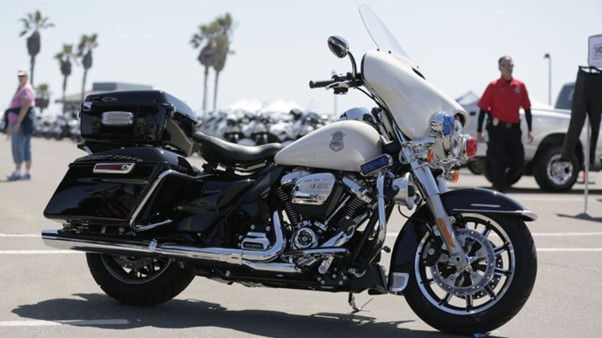A History of Harley Davidson Police Motorcycles
- Aug 1
- 3 min read
With less than 150 miles of paved roads in the whole country in 1908, the Detroit Police Department needed something faster than a horse, and more manoeuvrable than a car for their patrol men. They found their answer in the 1908 Harley-Davidson Model 4, with a single cylinder 26 cubic inch motor, belt drive, and a top speed of about 40 mph. These were light and durable, and compared to a horse, fast.

During the teens, through WWI, and into the roaring 20s Harleys got bigger and faster, just like the pace of life in the country. Police departments purchased Harley-Davidson's 61-inch F or J-series motorcycles to assist in their law enforcement efforts, with 17 horsepower. Flashing lights and sirens were not available until the mid 1930s, but the site of a uniformed patrol man on a motorcycle was enough to make most motorists pull over.

The Jazz Age lead into the Great Depression, and prohibition gave rise to bootleggers and gangsters, forcing the police to adapt to keep up. The new 74 cubic inch VL flathead motor in 1930 left the old IOE (intake over exhaust) bikes in the dust and became the new favourite of police everywhere. It was about this time that sirens, driven off of a friction roller on the rubber tire, appeared, as well as flashing lights and radios.

In 1932 Harley-Davidson introduced one of their most successful police models, the Servi-Car. The Special Police Division accommodated the needs of police departments by equipping each model with reversed controls; left-hand throttles and hand shift on the right side. Meter maids could work the throttle with the left hand, while chalk marking tires with the other hand for parking violators. The 3 wheeled Servi-Car was so popular with police departments it lasted until the early 1970's without more than minor changes over the years.

In 1950's motorcycle mounted state police squads were often called colourful names, like the "Pittsburgh Hot Rod", or in Tennessee the "Yellow Jackets". These highway patrol units were new Duo-Glides with a Panhead Motor and the ability to get though traffic and run with anything on the new interstate highways. After WWII America moved to the suburbs, cars got faster, and freeways upped the average speed they were traveling, all of which increased traffic deaths. The bright yellow police presence was supposed to make drivers slow down and take notice.

As Harley-Davidson expanded its market base, motorcycles were custom made for foreign police departments. Over 45 different countries bought these bike to help in their law enforcement efforts. In Chile in the 1940s, this armoured model was used, powered by a 74 inch U model, featuring a steel fairing and side car with a .30 caliber machine gun. Italian, Austrian, Lebanese, Australian, and other police forces have also been known to ride Harleys at various times.

Harley-Davidson motorcycles and sidecar units have always been popular in escorting dignitaries and have been used for presidential motorcades from the beginning. Protecting the president is serious work, and motor mounted patrol men are constantly scouting ahead and stopping traffic as the limos and SUVs follow along behind. These pictures include presidential inaugurations past and present, from Franklin Roosevelt and Harry Truman, to Donald Trump.

Today, Harleys can be found in over 3,500 police departments in North America, and in 45 foreign countries as well. Each department can order their own custom features, including bells and whistles like elaborate lighting schemes, air ride adjustable seats, and saddlebags that can be opened with one hand. The motor company has been known to lean on their relationship with the hard riding highway patrols in order to torture test new prototypes before production, like the Twin Cam 88 motors. They now offer not only the Milwaukee Eight powered Street Glide based bike (pictured), but a smaller Sportster unit and the Pan America as well.



























Comments